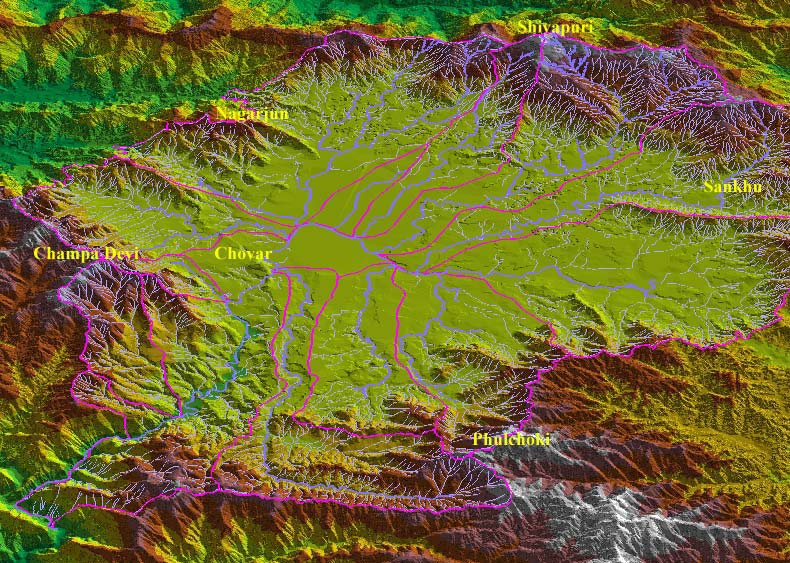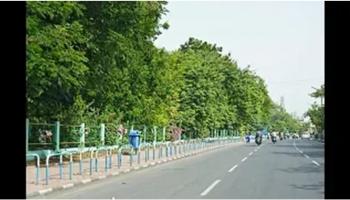Water Management
A survey of point of use household water treatment options for rural south India: A report detailing resources available
Posted on 07 Jan, 2012 10:59 AMPoint of use household water treatment is the process of treating water at the household level to improve its microbiological purity. In cases where treated municipal water is not available, or is subject to recontamination due to a faulty distribution system, household water treatment is essential and allows families control over their drinking water.
Norms and standards of municipal basic services in India: Report by the National Institute of Urban Affairs
Posted on 07 Jan, 2012 10:04 AMStudies indicate that the levels of infrastructure services available in urban regions in India are improving, however their quality is still debatable. This paper uses secondary data available from various government report to review the norms and standards for the following basic services
- Water supply
- Sewereage
- Solid waste management
- Primary education
- Preventive health care
In addition resource gaps and measures to bridge these gaps are also examined.
Examining the storm protection services of mangroves of Orissa during the 1999 cyclone – A special article in EPW
Posted on 06 Jan, 2012 11:03 PMThese ecosystems provide a bunch of direct and indirect services to humankind. This special article in Economic and Political Weekly (EPW) by Saudamini Das examines whether the mangrove forests in Kendrapada district of Orissa played any protective role during the severe cyclone that hit the state in October 1999.
Sustainable groundwater management – Report of the Working Group of the Planning Commission for the 12th Five Year Plan
Posted on 06 Jan, 2012 04:27 PMThe existing methodology of groundwater resources assessment is appropriate and suitable for country-wide groundwater resources estimation, considering the present status of database available with the Central and State agencies.
Floods in Orissa: No lessons learnt – An article in EPW
Posted on 06 Jan, 2012 02:26 PMThis article by Kishore C Samal in the Economic and Political Weekly (EPW) discusses how in the natural disater prone state of Orissa the authorities have not been able to draw up an effective disaster management plan and politicians continue to play politics with relief works. It argues that for dealing with these disasters and the relief and rehabilitation work that follows what is needed is the participation of the local community and functionaries of panchayati raj institutions, and coordination with national and international bodies.
Big dams and protests in India: A study of Hirakud dam – An article in EPW
Posted on 06 Jan, 2012 12:29 PMIt is evident that the domestic resistance to the project was variously compromised by nationalist rhetoric, imperatives of state development and absence of transnational support. The Hirakud dam project has failed on all of its objectives – flood management, hydropower production, irrigation and navigation. Its socio-economic impact has been devastating.
Living rivers, dying rivers: Bagmati river in Nepal
Posted on 05 Jan, 2012 06:07 PMBagmati river in Kathmandu: From holy river to unthinkable flowing filth

Ajaya Dixit initiated his presentation with a general account of how rivers shape the landscape and how riverine ecosystems have nurtured society and kept civilisations vibrant, cultured and creative. Dixit went on to discuss the basin characteristics of the Bagmati, a tributary of the Kosi that rises in the Shivapuri hills, north of the Kathmandu valley. Around fifteen percent of the basin area (3700 sqkm) lies in Nepal, while the remaining is in India. The average annual rainfall in the basin is 1400 mm and is more than 2000 mm in the hills. Bagmati is a seasonal river with rainfall and springs as its main source. Its mean flow is 15.6 cubic metre/second and low flow is 0.15 cubic metre/second in April.
Kathmandu lies in the Upper Bagmati basin and studies suggest that an ancient lake called the Paleo-Kathmandu lay within the Kathmandu valley as a lacustrine formation. Early settlers lived in lower slopes and used springs and river in the upper reaches. When they moved to the valley floor, they built dongia dharas, which are stone water spouts fed by the unconfined aquifers and delivered water through surface channels. Even today, dongia dharas dated back to 1500 years exist. The state built canals (raj kulo) tapped the upper stretches of the rivers close to the mountains. Rivers and irrigation helped recharge aquifers and ponds.
However, rising urbanisation has damaged these ancient artifacts. Over the last sixty years Kathmandu has expanded massively and its population has increased from 0.41 million in 1951 to 2.6 million in 2011. The city has a huge transient population aside from this, reducing it to a concrete nightmare. Seismologists suggest that Kathmandu is a rubble city in the making. Though the Bagmati river flow has not changed significantly in the last seventy years, the character of the river has been transformed significantly during the period 1970 to 1990. The river has been canalised while the dumping of the city’s garbage into it continues. Dixit identified a plethora of problems faced by the river such as upstream water diversion for drinking water needs, disposal of untreated liquid waste, disposal of solid waste, river jacketing for roads and commercial activities, sand mining and physical encroachment.
The state of the river is an outcome of the current approach to waste management particularly liquid waste management. Three types of waste water namely yellow water flux, grey water and yellow black flux are being generated and flowing water is being used as a vehicle to dispose these. The idea of a water based disposal system e.g. flush toilet embedded in Victorian engineering has led to a technological lock-in with the result that the notion of a natural hydrological cycle has undergone a fundamental transformation.
All the same, the bulk of the load in the river is biological though there are some factories releasing effluents. In the last 20 years some of them have been closed or relocated and the river now stands a chance of being salvaged.

Performance audit of water pollution in India – A report by the Comptroller and Auditor General of India
Posted on 03 Jan, 2012 11:44 AM The issue was examined by CAG because various stakeholders working in the field of environment flagged water pollution as the most important environmental issue that concerns us.
The issue was examined by CAG because various stakeholders working in the field of environment flagged water pollution as the most important environmental issue that concerns us.
The audit was conducted through document analysis, collection of responses to questionnaires, physical collection and testing of samples. The results of audit, both at the Central level and the State level, were taken into account for arriving at audit conclusions.
Cyclone Thane hits landfall between Puducherry and Cuddalore districts in Tamil Nadu, Heavy rainfall expected over Kerala in the next 24 hours - An update on floods, disasters, extreme weather events (1 to 31 December 2011)
Posted on 01 Jan, 2012 04:50 PMIt has been dominated by reports of a major cyclone Thane that lay centered on the the 29th December 2011 near latitude 12.30N and longitude 83.00E, about 300 km east-southeast of Chennai (Tamilnadu) and 480 km north-northeast of Trincomalee (Sri Lanka). Earlier reports related to the cyclone Thane indicate predictions and cyclone warnings made by the IMD for the north of Tamil Nadu and the south Andhra Pradesh coast along with possibility of heavy rains and severe winds and warnings for fishermen to refrain from going into the sea.
Later reports indicate that Cyclone Thane has hit the landfall between the Union territory of Puducherry and neighbouring Cuddalore district in Tamil Nadu at about 9 am leaving behind a trail of devastation followed by later reports of weakening of the cyclone activity and predictions of heavy rainfall over Kerala, south interior Karnataka and north interior Tamil Nadu
Adaptive modelling of water-logged groundwater regime
Posted on 31 Dec, 2011 10:21 PMAuthor : Patmajum







